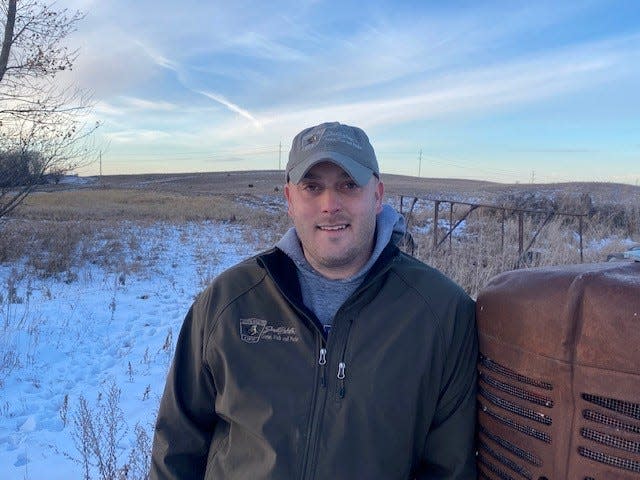Ben Lardy: It's been a tough spring, so try these food plot strategies

Spring 2022 has been a crummy one for sure.
Mud, cold winds and a lack of sunshine have set all of us back several weeks with projects in the field. For the folks who enjoy planting food plots on their properties, years like this can be especially tricky to establish high-quality food and cover for the critters we enjoy seeing and chasing. Luckily, there are several contingency plans that can be taken advantage of during wet conditions if you are willing to think outside the box.
Traditional corn and grain sorghum plots need a fairly long growing season to achieve peak production for food and cover. Now that we are just a few weeks from June with little to no crop in the ground, it might be time to find some better alternatives to take advantage of the growing days we have left.
Plant crops with shorter maturity windows
Selecting food plot species with a shorter maturity window in an option. Millets, oilseed sunflowers, buckwheat and brassicas such as turnips and radishes can produce viable food sources in very short periods of time. Many of these species can be planted into the first week of July and still produce viable seed or green browse for deer and pheasants heading into the fall.
There’s no question that many of these crop varieties have a hard time holding up to winter snow, but they still provide valuable habitat in late fall and early winter if properly established. Many of these species, due to their small seed size, can also easily be planted with a broadcast seeder for those with limited equipment.
Consider perennial food plots
Consider planting a perennial food plot and quit fighting wet ground. Many native flowering species can provide quality winter food and cover while also providing nesting and brood rearing habitat for pheasants. Species like Maximillian sunflower, evening primrose, Lewis flax, sweet clover and many others can provide heavy structure and a buffet of seeds for a variety of wildlife species. Some of these plots can be maintained for several years with a single planting operation.
Throw in the towel
Sometimes weather conditions are simply too tough to handle to get a quality crop planted. Luckily, Mother Nature usually finds a way to revegetate old fields with species such as kochia, lambs quarters and foxtail. All these species are known to naturally revegetate abandoned areas and are extremely high in feed value for game birds.
While fallowing a field can provide great food and cover for wildlife, it's very important to be mindful of neighbors and adjacent lands when going this route. If your plot decides to revegetate to noxious weeds such as thistle or wormwood, you’ll have to do some spot mowing or spraying sp as to not create a perennial weed problem.
As this whacky spring continues to throw us curveballs, start considering alternative options for your traditional food plot acres, and don’t hesitate to reach out to your local private land’s habitat biologist for other options.
Ben Lardy is a private lands habitat biologist with the South Dakota Department of Game, Fish and Parks.
This article originally appeared on Aberdeen News: Strange spring might force landowners to try new food plot strategies
